The Colorado Avalanche came up big in the first round of the Stanley Cup playoffs. They defeated the top-ranked team in the Western Conference – the Calgary Flames – in dominating fashion. By winning the showdown between fire and ice in five games, the Avalanche advanced to the second round for the first time in over a decade.
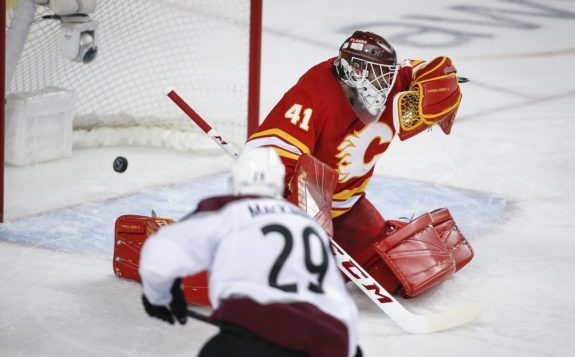
The Avalanche’s four straight wins showcased the team’s recent progress. While still a young group, they are no longer children. The Avalanche are growing up and growing stronger.
If you are a fan, you’re proud parents. If you are an opposing team, you’ve been warned.
The Birth of the Avalanche Rebuild
The Avalanche didn’t expect for their rebuild to take a sudden turn and dive into the dumpster fire that was the 2016-17 season. But sometimes life hands out lemons. The real trick is to find the way to make lemonade.
Two-and-a-half years ago, the previous coach – the legendary Patrick Roy – quit unexpectedly, a month before the rookies were to report for camp. That was a pretty big lemon. After a hurried and options limited search, general manager Joe Sakic hired Jared Bednar. For many critics, that didn’t look like a step towards making lemonade. Many considered the hire a mistake which could set the team back years.
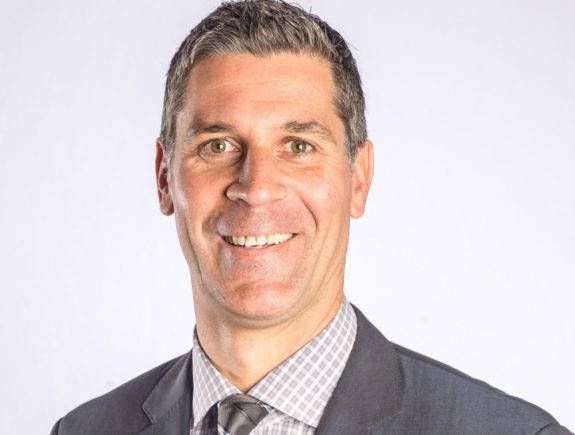
Bednar stepped in to lead a team that had been selected for a completely different purpose than the new direction he had been hired to implement. Bednar didn’t even have time to hire his own staff. Instead, he worked with the remaining assistant coaches after Roy’s abrupt departure. It was a recipe for disaster, and disaster is what happened.
Over the summer before the big disruption, the Avalanche had added a number of players who were specifically selected to bring the size and physicality Roy wanted to help the team succeed in the bruising Central Division. Colorado picked up players like defensemen Patrick Wiercioch and Fedor Tyutin as well as forward Joe Colborne.
However, Bednar had been hired with the goal of building on the young talent’s speed and skill. Sakic had set a clear vision for the Avalanche’s future, helping the young team grow up together.
“…we are going to stay young. In the next couple of years, we may even get younger…and get a little bit quicker and faster out there.”
Joe Sakic
Bednar stepped into a roster that had been constructed for a different coaching vision, though. In addition to the recently acquired free agents, the roster also had 36-year-old defenseman Francois Beauchemin, 35-year-old Rene Bourque and 39-year-old Jarome Iginla.
If the entire roster had been in that grouping, perhaps Colorado could have iced a more productive team. But that wasn’t the situation. Along with the aging veterans, they had a stable full of young up-and-comers whose skillset didn’t match.
The Avalanche had extended forward Nathan MacKinnon, then 21 years old, for seven years in July, before the abrupt coaching change. Team captain Gabriel Landeskog was only 24. 20-year-old Finnish forward Mikko Rantanen entered having played only nine NHL games the previous season. Defenseman Nikita Zadorov, added via trade, was only 21 and very rough around the edges.
But the coach remained clear on his objective.
“The league is getting faster every day, and we have to find a way to put a structure in place to get these guys playing an up-tempo style…”
Coach Jared Bednar
The awkward combination of players, the disruptive coaching change and injuries (particularly losing starting goaltender Semyon Varlamov for two-thirds of the season) created a perfect storm. The maelstrom resulted in an ugly 48-point season.
Yet the disastrous season brought a silver lining as the Avalanche launched themselves into a serious rebuild.
Avalanche Dive Into the New
Bednar had the opportunity to call-up some of the Avalanche’s young prospects towards the end of the 2016-17 season. The team was far out of the playoff picture and the call-ups offered a chance to get the prospects a little NHL exposure. Bednar was sifting through the lemons.
Gritty forward J.T. Compher made an appearance.
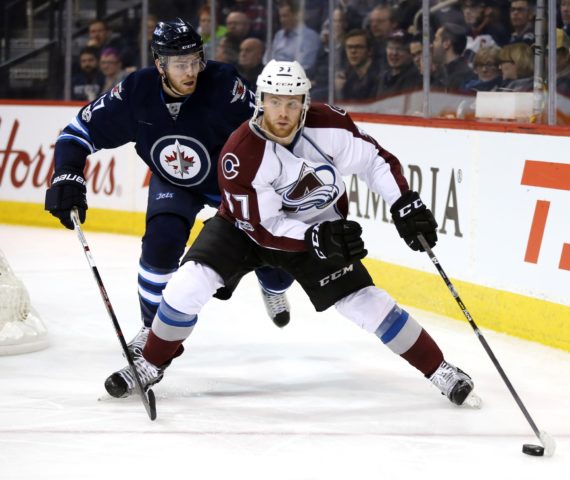
The 20-year-old’s solid two-way play along with a tenacious demeanor brought hope to a dispirited fanbase. 19-year-old first-round draft pick Tyson Jost also managed a handful of games and showed enough skill to spark interest.
Additionally, the Avalanche added a trio of promising players before the trade deadline – forward Sven Andrighetto (age 23) and defenseman Mark Barberio (age 26) were acquired via trades, while forward Matt Nieto (age 24), was claimed through waivers.
The spring brought additional changes to the roster as the Avalanche began trading away players who no longer fit the vision. Iginla, Cody McLeod and Andreas Martinsen were traded before the end of the season.
In the offseason, Sakic added college free agents Alexander Kerfoot and Dominic Toninato to the mix. He picked up another veteran goaltender in Jonathan Bernier after losing Calvin Pickard in the expansion draft. And he traded for left-wing veteran Colin Wilson.
But there was also addition through subtraction. The Avalanche released 11 free agents from both the organization’s NHL and AHL clubs. Of those 11, only Beauchemin subsequently played more than a handful of games in the NHL. Even the veteran blueliner only managed one more NHL year before retiring. The rest moved onto other AHL rosters or pursued their careers overseas – ranging from the KHL to the Swedish Hockey League.
The rebuild was on and the Avalanche pursued the “younger, faster” vision without regard. Finishing the season in last place afforded them the fourth-overall draft pick, which they used to select defenseman Cale Makar. Makar was heading to college, so he was an investment in the future.
Embracing the Youth
Training camp became a competition for starting spots, regardless of history, age, or veteran status. A number of the returning players had taken Bednar seriously about his warning to improve their conditioning in the offseason. Even familiar faces had altered their physique.
Those who heeded the warnings thrived in camp. Those who didn’t, faltered. There were conditioning sprints, races and bag skates. Bednar ran the team relentlessly, driving a disciplined work ethic and efficient skating paired with solid positioning. He was intent on getting the most out of the youth and the veterans. The lemons were getting squeezed.
Meanwhile, skilled veteran center Matt Duchene was nearly a holdout, showing up to camp at the last possible moment.

He was bucking for a trade and most analysts thought Sakic should have traded him already. But Sakic remained patient, waiting for just the right offer.
There were other issues. Zadorov had problems with his agent in getting an extension signed and showed up late to camp. Not only was he late, but he wasn’t the kind of shape Bednar wanted, forcing him to push to catch up with his teammates. Rumors kept circulating about Duchene and whether he would even play for the Avalanche. The entire organization was getting sifted.
But the Avalanche discovered ways to turn all that turmoil into lemonade. Zadorov was benched for a few games at the beginning of the season until he caught up to the rest of the team. Duchene was eventually traded for an embarrassment of riches, including an immediate impact player in defenseman Sam Girard.
The team kicked their game up a notch after the Duchene trade and MacKinnon began playing like a force to be reckoned with.
The difference was night and day. The scrappy young team never seemed out of a game, able to come back in the waning moments of any match-up. In fact, the Avalanche squeaked into the postseason with a dramatic win against the St. Louis Blues in the final regular season contest. The playoff experience was merely gravy for a team that was just happy to be there.

The feisty club succeeded in forcing the returning Stanley Cup finalists to six games in the first round while most prognosticators anticipated a Nashville Predators sweep. The upstart Avalanche battled both injuries and the Predators as they played the series without their leading defenseman Erik Johnson and their starting goaltender Semyon Varlamov.
The backup goaltender – Jonathan Bernier – played three-and-a-half games before getting injured, leaving the team with their third-string goaltender for the final two-and-a-half games. The Avalanche also played five of those games with two AHL defensemen manning the blue line as injuries mounted. Yet they proved tough to beat and surprised the hockey world with their tenacity.
The Avalanche were moving into the role of upstarts, like any good adolescent, learning they had what it took to come through despite the odds. The lemonade was coming.
The Avalanche Battle Adversity
Colorado started the 2018-19 season with high expectations. They rushed out of the gates, going on a 15-6-5 run for the first two months of the season. Their top line of MacKinnon-Landeskog-Rantanen was being compared with the Boston Bruins top trio. The Avalanche were winning games and rising up the rankings, almost reaching the top spot in the Western Conference.
Then, the wheels fell off.
December rolled in with a chilling effect on the Avalanche. The goaltending suddenly fell on hard times.
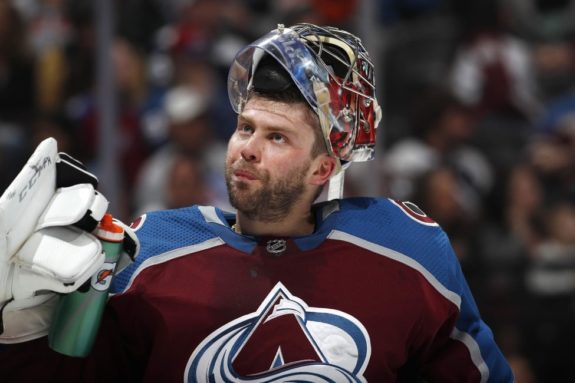
A good game meant the netminders managed a .900 save % (SV%). A bad game saw them struggle to reach .800.
When the power play worked, the penalty kill performed like a sieve. When the penalty kill was hot, the power play suffered a serious power outage. At points, fans were begging for the team to roll out the second power-play unit in hopes of at least registering a shot on goal during the man advantage.
Colorado struggled to improve on their face-offs. Ironically, when they won the face-off battle, they tended to lose games. Bednar played with line combinations. The new lines worked for a matchup only to play as a disjointed mess in the next contest.
The defense looked porous at times, leaving their struggling netminders to fend for themselves on volleys of shots, peppered on rebound after rebound. Yet, when the defense addressed their issues, the goaltenders allowed weak shots in net.
It was a perfect storm of issues that kept morphing throughout an even gloomier January. Each weakness the Avalanche addressed would improve only to have another area of the game spring a leak.
Somehow, though, the Avalanche succeeded in persevering and gradually their fortunes began to change. February saw some improvement and by the end of the month, the team started to roll.
Lost defenseman Ian Cole to injury? No problem.
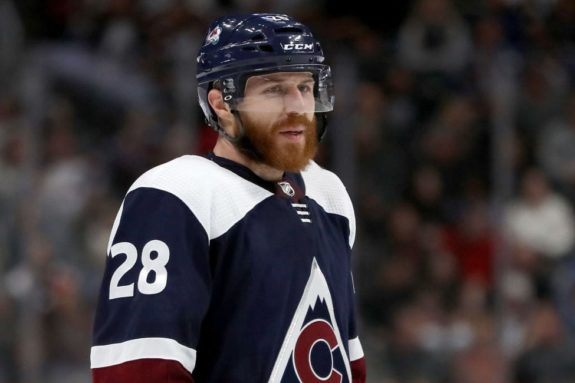
Forward Matt Nieto out for the season? The Avs rolled out 11 forwards and seven defensemen as their lineup. Landeskog out four to six weeks? Shuffle the lines and play on. Rantanen injured down the stretch? Next man up.
The adversity forced the Avalanche to adapt. Their ability to successfully implement those changes propelled them into the playoffs and a 4-1 first round win. The Avalanche earned their first second-round appearance since 2008.
What the Avalanche Learned
While the early success was nice, the Avalanche appeared to learn their best lessons during the dark months. In the frozen winter, the Avalanche discovered how to make ice cubes for their lemonade. They used the challenges to refine their game, not undermine the team.
When the top players stopped scoring, the other forwards found ways to light the lamp. When those players struggled, the defense stepped up. In March, the defensemen earned points on nearly 75% of the goals scored.
When it became apparent the goaltending was going on an extended tank, the rest of the team focused on limiting opponents’ shots. The forwards started falling back more often and making better checks. The team improved so much, for a stretch the Avalanche found themselves limiting foes to as little as 20 shots a night.
When MacKinnon called out his coach on national TV after he made a controversial decision, the team could have unraveled.
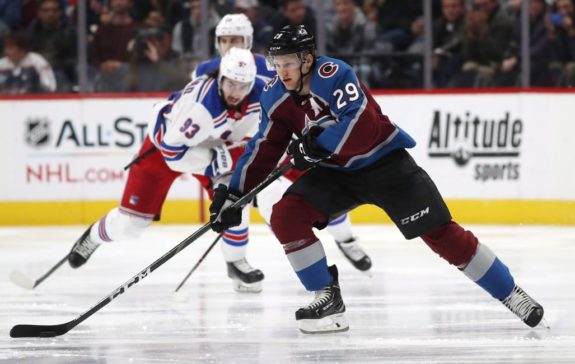
Rumors swirled that Bednar had lost the locker room, or at least, MacKinnon. MacKinnon quickly made a public apology but concerns lingered.
The players had a choice, especially after Landeskog was injured and then Rantanen went down, to admit defeat, pack it all in and prepare for the offseason. But they didn’t.
Instead, the Avalanche leaned into the adversity and pushed back. Not only did the team limit chances when the goaltenders struggled, they supported them. After nearly every practice, every game, players made a point of going to both goaltenders and encouraging them. They could have pointed fingers. But they didn’t.
When the media pounced on MacKinnon’s comments, it could have splintered the locker room. Neither coach nor player allowed that to happen.
When the winds of misfortune came the Avalanche’s way, they learned to direct the force to propel the group forward. The team allowed the challenges to refine them and mold them into something better, stronger. They matured. It’s part of growing up.
The mental toughness and the cohesiveness paid off as they earned a playoff spot. It paid even bigger dividends when they took on the Flames. After the first game loss, the Avalanche simply did what they had learned all season, they adapted.
Mike Smith was playing well? Okay, time to throw more pucks on the net. Matthew Tkachuk wanted to beat up on the forwards? Time to send Nikita Zadorov his way. Sam Bennett wanted to get chippy? The Avalanche didn’t respond, and proved they learned self-restraint. The Flames wanted to slow them down? The Avalanche plowed through.
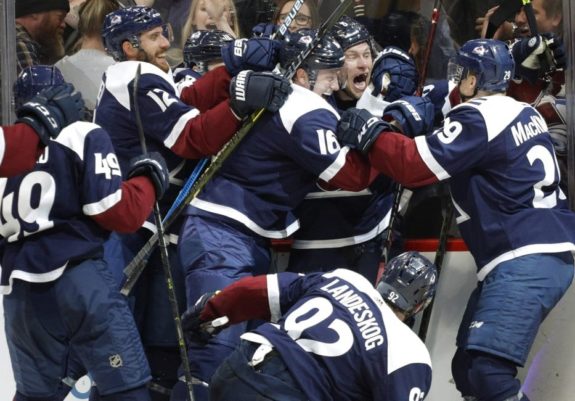
Colorado showed discipline and forethought, showcasing their road to maturity. And it paid off. The sweet win added the sugar to the lemonade.
Avalanche Enter Round 2 Ready to Compete
The Avalanche will have a chance to measure their progress when they face-off against the San Jose Sharks in Round 2. The Sharks haven’t missed a postseason since 2015 and had 10 straight seasons of playoff hockey (excluding the lockout) prior to then. In fact, the Sharks have advanced to the postseason in 19 of their past 21 seasons. They also have a lot of veterans who have logged an immense number of playoff minutes.
Have the Avalanche acquired enough tools and sufficient pieces to defeat the Sharks? The Colorado contingent has earned the right to find out. It’s time for the Avalanche to take the next step. No longer happy just to make the playoffs, this Avalanche team wants to go deep into the postseason.
Martin Luther King, Jr. said, “The ultimate measure of a man is not where he stands in moments of comfort and convenience, but where he stands at times of challenge and controversy.”
Few things are more challenging or contentious than the Stanley Cup Playoffs. The Avalanche won the right to contend for success on a bigger stage. It’s time to see if the lemonade is ready to drink. If so, the Avalanche could go deep.
The Sharks have been warned – this Avalanche team is growing up and ready to rumble.